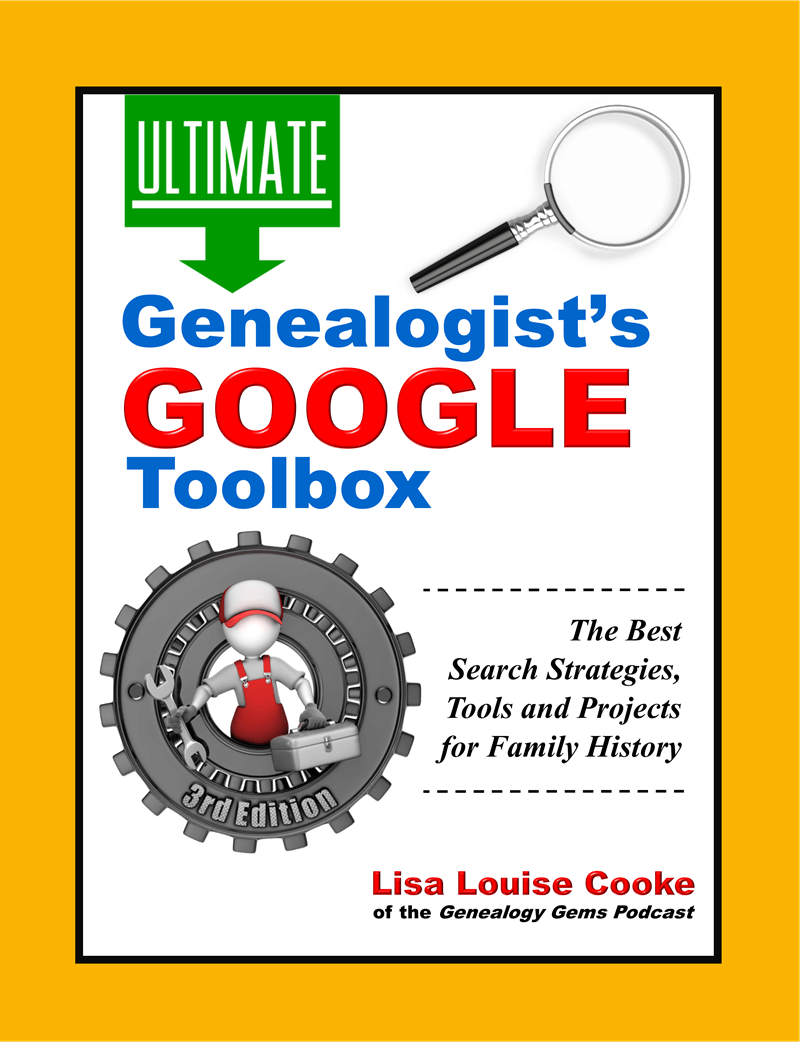We Dig These Gems! New Genealogy Records Online
We learn about great new genealogy records online every week! On Fridays we round up a few for you. Watch for databases and documents that your  ancestors might appear in–and get inspired by the types of records that may be out there for your family, waiting for you to discover. This week: a photo archives for Canadian Mennonites, a Georgia state newspaper collection, a genealogy index for a northeast Ohio archive and WWII Cadet Nursing Corps membership cards (US).
ancestors might appear in–and get inspired by the types of records that may be out there for your family, waiting for you to discover. This week: a photo archives for Canadian Mennonites, a Georgia state newspaper collection, a genealogy index for a northeast Ohio archive and WWII Cadet Nursing Corps membership cards (US).
CANADIAN MENNONITE PHOTO ARCHIVE: A new database is now online with over 80,000 images of Mennonite life from across Canada and dating back to 1860s. A press release says that the archive “is a project of the Mennonite Historical Society of Canada and includes Mennonite archival partners in British Columbia, Alberta, Saskatchewan, Manitoba, and Ontario.” An online ordering system allows visitors to order image copies for noncommercial use.
GEORGIA NEWSPAPERS: The Digital Library of Georgia has launched an archive of north Georgia historical newspapers. “The North Georgia Historic Newspapers Archive provides online access to six newspaper titles published in three north Georgia cities (Dalton, Gainesville, and Rome) from 1850 to 1922. Consisting of over 33,000 newspaper pages, the archive provides historical images that are both full-text searchable and can be browsed by date. The site is compatible with all current browsers and the newspaper page images can be viewed without the use of plug-ins or additional software downloads. The archive includes the following north Georgia newspaper titles: Gainesville News (1902-1922), Georgia Cracker (Gainesville) (1894-1902), North Georgia Citizen (Dalton) (1868-1921), Rome Courier (1850-1855), Rome Tri-Weekly Courier (1860-1880), Rome Weekly Courier (1860-1878). The Digital Library of Georgia will add additional titles from the region over time.
OHIO GENEALOGY INDEX. The Western Reserve Historical Society in Cleveland, OH has created an online Genealogy Index to some of its most valuable and unique genealogical records, including original funeral home and Bible records. Also in the index are Jewish marriages and death notices, an index of names in a significant African-American manuscript collection, a 1907 Cleveland voter registration index, a photo database of Cleveland military personnel from WWII and the Korean War and a biographical sketch name index. Currently, there are about 320,000 records in the index; more are being added on an ongoing basis. The Society primarily archives records relating to Cleveland and northeast Ohio. Soon to be added are indexes to the 1870 mortality census for Ashtabula, Ohio and indexes to several church records collections.
WWII CADET NURSING CORPS (US): The WWII Cadet Nursing Corps Card Files, new on Fold3, contain membership cards of women who joined. According to Fold3, the cards “are organized by state, nursing school, and cadet name. Some cards include the date of admission to the school, date of admission to the corps, and date of graduation (or date of other reason for termination from the school). Others contain details like the woman’s marital status, father’s/husband’s name and profession, years of college completed, place of residence, and how they heard about the corps. Still others also record the woman’s age in addition to the previously mentioned information.”
 To search for images you can use without violating copyright, do a keyword search in Google Images (or just do a keyword search from Google’s home page and then click “Images” above your search results). Click Search Tools. Another toolbar will pop up. Click “Usage rights.” You can sort search results by those that are labeled for reuse in different ways. You won’t capture every copyright-free image, but hopefully you’ll get a decent selection of options! This tip comes to you courtesy of the book The Genealogist’s Google Toolbox, Second Edition by Lisa Louise Cooke–the fully-revised 2015 edition that’s packed with strategies that will dramatically improve your ability to find your family history online.
To search for images you can use without violating copyright, do a keyword search in Google Images (or just do a keyword search from Google’s home page and then click “Images” above your search results). Click Search Tools. Another toolbar will pop up. Click “Usage rights.” You can sort search results by those that are labeled for reuse in different ways. You won’t capture every copyright-free image, but hopefully you’ll get a decent selection of options! This tip comes to you courtesy of the book The Genealogist’s Google Toolbox, Second Edition by Lisa Louise Cooke–the fully-revised 2015 edition that’s packed with strategies that will dramatically improve your ability to find your family history online.
6 Fantastic Ways to Use YouTube for Family History
 Are you using YouTube to help research and share your family history? You should be! Here are 6 practical ways and several online resources to help you do that.
Are you using YouTube to help research and share your family history? You should be! Here are 6 practical ways and several online resources to help you do that.
YouTube is the world’s most popular online video channel and the second-largest search engine in the world. It’s now owned by Google. That means you can harness the power and flexibility of Google searching to find exactly what you’re looking for on YouTube.
Can you use YouTube for family history? Yes, in so many ways! A recent YouTube search for “genealogy” brought up 124,000 results, and “family history” brought up just slightly less. The ways you’ll use YouTube for family history are a little different than the ways you might use other search engine and “big data” genealogy websites, since every result you’re looking for is a video. But because video is such a powerful tool, when you do find something you need, it can often become one of your most valuable finds on that topic.
6 Ways to Use YouTube for Family History
Think about how to apply your own family history research to each of these ways to use YouTube for family history. Check out the many linked examples we’ve shared elsewhere on our site for more tips and inspiration:
#1 Learn more about your ancestor’s world.
Search for major historical events, images of an old ancestral town, and information about clubs, businesses, and other topics that impacted your ancestors’ lives. Was there a disaster? Find footage, like from the 1906 San Francisco earthquake (that’s my own YouTube playlist because it has relevance to my ancestors), the Johnstown, PA flood of 1889 (which Contributing Editor Sunny Morton’s ancestors survived), or a disaster like this ship overturning. Click here to read a blog post by a Genealogy Gems podcast listener who hit pay dirt with historical footage on her ancestor’s town.
#2 Find your ancestors in action.
Ever since the Internet came on the scene, genealogists have been searching online for photos (or for the distant cousins possessing photos) of their family. Apply this strategy to YouTube and video. You might find them on-the-job, out-and-about in the community, or the subject of a historical news reel. Click here to read about the stunning footage Contributing Editor Sunny Morton found on her husband’s great-grandfather.
#3 Get quick answers to specific genealogy research questions.
Got a pressing question on how to fix your Ancestry tree, or how to create crafty family history gifts? Videos on YouTube not only supply answers, but show you how. For example:
- How to blog about your family history: my free YouTube series;
- How to read a faded tombstone without damaging the stone, a video I posted with some creative photo manipulation techniques;
- How to create a free family history website with your family tree;
 Evernote for genealogy YouTube series: a free online series I’ve created to help you use Evernote for genealogy;
Evernote for genealogy YouTube series: a free online series I’ve created to help you use Evernote for genealogy;- How to use Sanborn maps for genealogy, a popular video about important city maps created in the U.S.;
- MyHeritage webinar, with lots of great tricks for getting the most out of their website; and
- Freedman’s Bureau records for tracing African-American ancestors, a series recently posted by FamilySearch.
#4 Participate in online genealogy conferences from the comfort of home.
Not everyone has the time or money to attend a genealogy conference. Conference organizers understand this and are harnessing the power of online video to bring key content to users where they are.
To get started, check out the videos that feature popular conference speakers and the conference experience from channels like SCGS (Jamboree) by searching SCGS genealogy and NGS by searching NGS Genealogy in the YouTube search box or app.
#5 Make and share your own family history videos right on YouTube.
Click here to read some free tips on how to make a totally shareable video. Click here to learn more about a podcast episode and video that offer more in-depth instructions on creating a great family history video. Here are some examples of family history videos I’ve created and posted on YouTube:
- The Great War 100 Years Later, Found Among Grandmother’s Things
- A Nurse in Training, Part 1 and Part 2
#6 Learn new craft techniques and display ideas for sharing your family history.
Get crafty and creative with project ideas found on YouTube! Search for keywords such as photos, shadow boxes, quilting, scrapbooking, etc. I’ve set up a special playlist on the Genealogy Gems Channel called Family History Craft and Display Projects that is chock full of videos to get you started. Search “GenealogyGems” in the YouTube app or click here to go directly to the playlist. Recently I posted a new YouTube video that captures some highlights of projects I’ve created. You can also read Genealogy Gems blog posts that recommend YouTube videos for specific craft ideas like making a photo quilt or a message in a bottle.
Here’s a tip: When you find a YouTube channel you like, click the Subscribe button. This will set you up to be notified of new videos from that channel as soon as they are published. (Sign in to YouTube with your free Google account).
How to Get the Most Out of YouTube for Family History
 Learn how to get the most out of YouTube for family history in my book The Genealogist’s Google Toolbox. There’s an entire chapter on YouTube! You’ll learn how to navigate your way through YouTube; conduct the best searches for videos; how to create a custom YouTube channel, playlists and home page; how to like and share videos; how to upload your own videos and more.
Learn how to get the most out of YouTube for family history in my book The Genealogist’s Google Toolbox. There’s an entire chapter on YouTube! You’ll learn how to navigate your way through YouTube; conduct the best searches for videos; how to create a custom YouTube channel, playlists and home page; how to like and share videos; how to upload your own videos and more.

